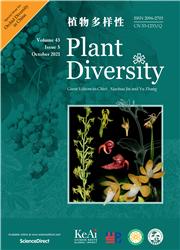Convergent relationships between flower economics and hydraulic traits across aquatic and terrestrial herbaceous plants
Abstract
Maintaining open flowers is critical for successful pollination and depends on long-term water and carbon balance. Yet the relationship between how flower hydraulic traits are coordinated in different habitats is poorly understood. Here, we hypothesize that the coordination and trade-offs between floral hydraulics and economics traits are independent of environmental conditions. To test this hypothesis, we investigated a total of 27 flower economics and hydraulic traits in six aquatic and six terrestrial herbaceous species grown in a tropical botanical garden. We found that although there were a few significant differences, most flower hydraulics and economics traits did not differ significantly between aquatic and terrestrial herbaceous plants. Both flower mass per area and floral longevity were significantly positively correlated with the time required for drying full-hydrated flowers to 70% relative water content. Flower dry matter content was strongly and positively related to drought tolerance of the flowers as indicated by flower water potential at the turgor loss point. In addition, there was a trade-off between hydraulic efficiency and the construction cost of a flower across species. Our results show that flowers of aquatic and terrestrial plants follow the same economics spectrum pattern. These results suggest a convergent flower economics design across terrestrial and aquatic plants, providing new insights into the mechanisms by which floral organs adapt to aquatic and terrestrial habitats.

 求助内容:
求助内容: 应助结果提醒方式:
应助结果提醒方式:


